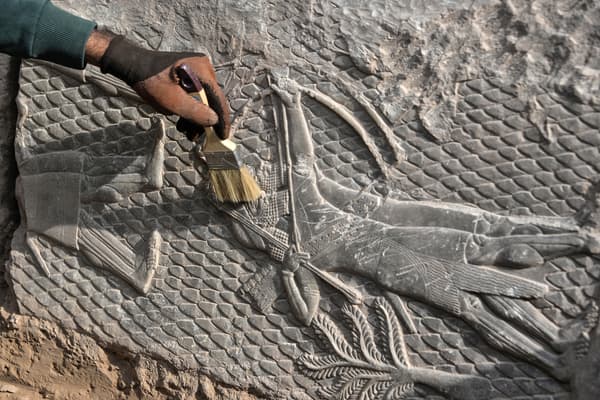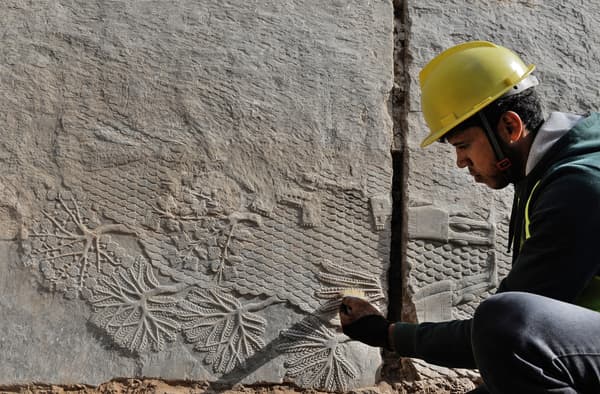US and Iraqi archaeologists have unearthed eight 2,700-year-old marble bas-reliefs depicting war scenes from the time of Assyria’s powerful kings in Mosul, a major Iraqi metropolis, a local official said on Wednesday.
The discovery was made at the Mashki site, one of the historic gates of the ancient city of Nineveh located in Mosul. The monumental gate was razed to the ground by the jihadists of the Daesh group, during their reign of terror imposed between 2014 and 2017 in the northern metropolis.
The eight gray marble bas-reliefs date from the time of Assyrian King Sennacherib (705-681 BC), according to a statement from the Iraqi Council of Antiquities and Heritage. This king will rebuild and expand Nineveh, the capital of the Assyrian empire, including the construction of a magnificent palace.

First “relatively intact” remains discovered at the site
The bas-reliefs unearthed a week ago highlight a soldier in profile preparing to shoot an archery, but also palm trees and finely chiseled trees.
“We believe that these rooms were moved from Sennacherib’s palace and reused by the king’s grandson, to renovate the Mashki gate and expand the guard room,” Fadel Mohamed Khodr, head of the archaeological mission restoring the site, told AFP. .
The first builders had knowingly erased the carved decorations on the bas-reliefs, adds the expert. “Only the part buried underground has preserved its sculptures,” added Fadel Mohamed Khodr.
These vestiges “are the first discovered in this site relatively intact and preserving their original appearance,” he rejoices.
Reconstruction after the destruction of Daesh
Nineveh was “the oldest and most populous city of the Assyrian Empire, imperial capital and great crossroads between the eastern Mediterranean and the Iranian plateau,” the International Alliance for the Protection of Heritage in Conflict Areas (ALIPH) recalls on its website.
After the destruction inflicted by Daesh, since 2021 ALIPH has financed the reconstruction of the Mashki gate by a team of archaeologists from the American University PENN and their Iraqi counterparts.

From 2014 until its military defeat in Iraq in late 2017, Daesh occupied large swaths of territory and considered Mosul its “capital” in the country.
Iraq has suffered for decades from the looting of its antiquities: after the US invasion in 2003, then with the arrival of Daesh, which had dedicated itself to a “cultural cleansing”, according to the UN, razing part of the remains of ancient Mesopotamia, or reselling parts on the black market.
Source: BFM TV

